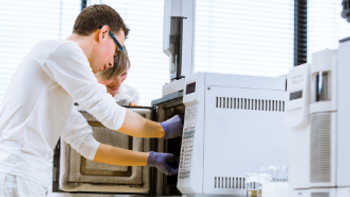
New Frontiers in Complex Matrix Analysis
Thursday, October 7, 2021 at 2pm EDT | 1pm CDT| 11am PDT Join us to learn more about applications of direct analysis in real time–mass spectrometry (DART-MS) and its relevance to chemical ecology, forensics chemistry, and imaging mass spectrometry.
Register Free:
Event Overview:
A continuing challenge in analytical chemistry is the characterization and identification of complex matrices, particularly those found in nature, such as animal-derived products and plant materials. In general, attempts to characterize complex matrices rely on identification of diagnostic singular components such as biomarkers, a process which requires extensive sample preparation. The steps involved, which can include solvent selection, extraction procedures, and method optimization, cause bottlenecks in the analysis of composite materials. Furthermore, popular mainstream techniques such as GC–MS are not always well suited for detection and identification of some classes of molecules (such as organosulfur compounds that yield artifacts when analyzed by this approach; compounds that fragment so extensively by EI-MS as to render the observed fragmentation patterns of little use in identifying the compound; and molecules that are not readily volatilized and which are therefore not amenable to analysis by GC). This negatively impacts chemical analysis method development in several fields, including forensics, agriculture, and the food industry. In this regard, direct analysis in real time–high resolution mass spectrometry (DART-MS) offers unique opportunities to circumvent some of these challenges, particularly for complex matrices. Furthermore, the application of chemometric processing tools to the mass spectral data can enable identification of many types of materials. This presentation will feature several examples of how this approach can be applied to provide complementary information to that furnished by more conventional techniques, and advance the frontiers of scientific discovery in various fields including forensic science, chemical ecology, and imaging mass spectrometry.
Key Learning Objectives:
- Learn more about DART-MS applications for chemical ecology, forensics chemistry, and imaging mass spectrometry
- Learn more about techniques better suited for the detection and identification of easily fragmented molecules
- Learn more about applications of direct analysis in real time–mass spectrometry (DART-MS) to questions of relevance to chemical ecology, forensics chemistry, and imaging mass spectrometry
Who Should Attend:
- Lab managers
- Principal investigators
- Analytical chemists
- Scientists interested in techniques better suited for the detection and identification of easily fragmented molecules
Speakers
Rabi Musah
Professor
State University of New York at Albany
Sponsors
JEOL
Register Free:
Newsletter
Join the global community of analytical scientists who trust LCGC for insights on the latest techniques, trends, and expert solutions in chromatography.




